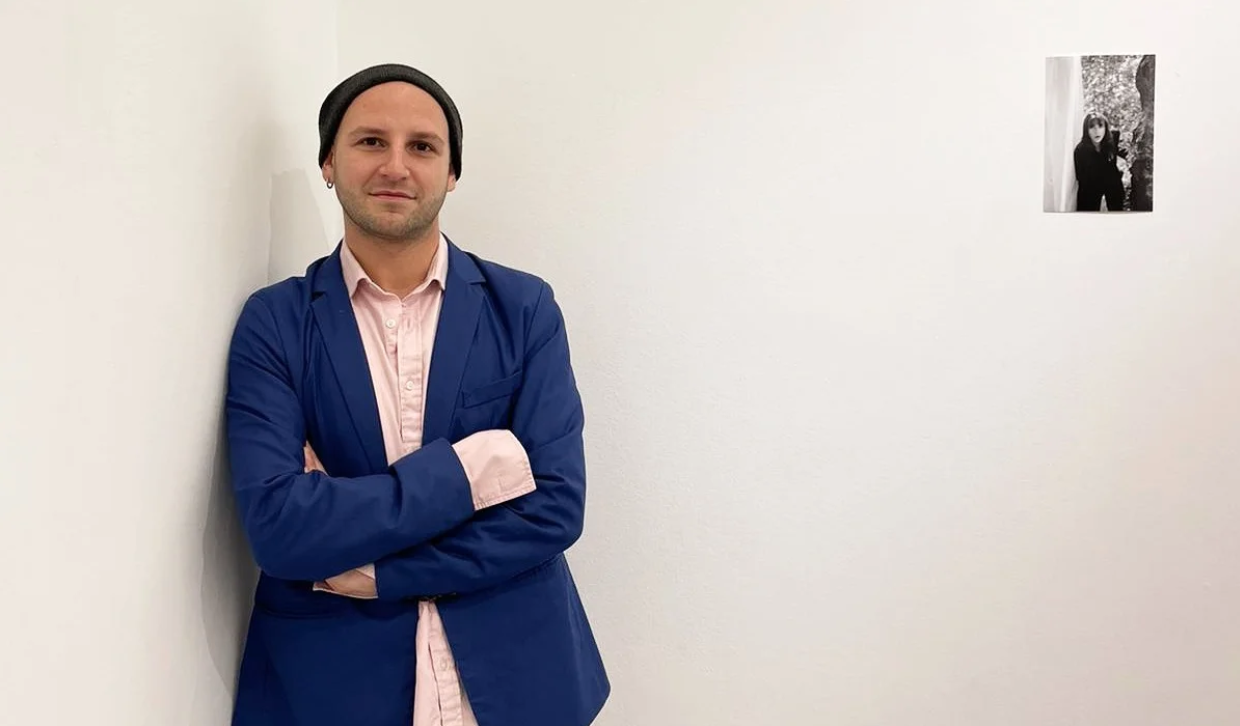Programme “Territories, Resistance, Freedom”
Soviet Onion | Art Residency
Nikoloz Nadirashvili . Georgia

Nikoloz Nadirashvili is the curator in residency at the CERA Project in 2023 (March–May).
During his residency in Portugal, he will research the incorporation of religious themes in modern and contemporary Portuguese art, departing from the period of “Estado Novo,” which might echo the Soviet totalitarian regime. He will also research contemporary Portuguese religious-themed art under queer and political subjects.
Nadirashvili’s residency is supported by DGArtes and the European Union, in the framework of the EU4Culture project implemented by the Goethe-Institut, Czech Centers, Danish Cultural Institute, and Institut Français de Géorgie.
_ _
Nikoloz Nadirashvili is a contemporary art historian and curator from Tbilisi, Georgia, where he works as Chief Curator of TRANSCENDENTALIA at Peace Cathedral. Previously, he lectured at the Tbilisi State Academy of Arts and Shota Rustaveli Theatre and Film State University while managing the Contemporary Art Archive – Tbilisi and Oxygen Biennial. Since 2013, he has curated numerous exhibitions and collaborated with different organisations, namely UNESCO, the Noosfera Foundation, the Georgian Embassy in Paris, and the Ministry of Culture, Sport, and Youth of Georgia. He holds an MA in Art History from Tbilisi State Academy of Arts (Georgia), followed by an MA in Arts, Policy and Marketing from the University of Groningen (the Netherlands). He is a member of the Association Internationale des Critiques d'Art.
Public Programme - Talks
Georgia: Contemporary Art, Religion & (Queer) Politics
March 29 | 7-9 pm
Venue: Lagoa Henriques Auditorium
Faculty of Fine Arts, University of Lisbon
Largo da Academia Nacional de Belas Artes 4, 1249-058 Lisboa, Portugal
Venue: Auditorium
ESAP
Rua dos Navegantes 51, 4350 Porto, Portugal
March 30 | 3-5 pm
In the framework of his residency at the CERA Project, Nikoloz will be presenting the findings from his three-year research for the first time in Portugal. His research is about socio-political studies of religious-themed artistic practices from the 1970s onwards, which acted as a weapon for alternative politics in Georgia and other post-Soviet countries.
__
Nikoloz has been researching the rationale of referring to religious (Christian) iconography in contemporary visual arts by the artists from late socialism and post-Soviet periods in Georgia and other (post-)Soviet countries. Although the topic is specific, it also provides the opportunity to discuss the phenomenon of Georgian contemporary art from the 1970s onwards.
The 1970s was the period when conceptual art emerged in Georgia. It coincided with the “renaissance of the Georgian secular Christian art”: the artists would refer to the biblical themes aimed at personal emancipation and confronting the Soviet authoritarian regime. After the fall of the USSR, the citizens of Georgia (and presumably the citizens of the other Soviet countries) returned to their “cultural origins.” In this regard, professor of religious studies Alexander Agadjanian characterises this return as being very aggressive and intense. During these times, contemporary artists from post-Soviet Georgia revisited religious concepts as an instrument for protesting. However, the addressee of non-conformity here was not the State anymore, but the patriarchal and chauvinist trends intensified after the collapse of the Soviet Union, and the institutions backing these trends, such as the Orthodox Church of Georgia itself by playing a central role in solidifying Georgian nationalism.
One of the dominant conceptual frameworks of religious-themed post-Soviet Georgian art relates to queer topics, as sexual minorities are positioned by the Church (and the Government of Georgia) as the threat to “Georgian traditions.” Considering the centuries-long dominance of Christian imagery in the local cultural context, it seems, in both cases, the decision of the artists (from the late Soviet and post-Soviet periods) to work on religious themes in Georgia echoes Jenny Holzer’s quote: “Use what is dominant in a culture to change it quickly.”
Thus, this 2-hour meeting (presentation & Q&A) will encompass a brief socio-political discourse analysis of the last five decades in Georgia and an iconological interpretation of the artistic practices that referred to Christian imagery as a weapon for alternative politics.
Sua Santidade, Portugal!
May 12 | 4PM
Venue: Discussion room
A Leste
Calçada da Póvoa 65, 4000-024 Porto, Portugal
Nikoloz Nadirashvili is a contemporary art historian and curator from Tbilisi, Georgia, who came to Lisbon on the 17th of March 2023, aimed at research the interrelationship between religion and politics manifested in modern and contemporary art in Portugal, later to be juxtaposed with the late Soviet and post-Soviet contexts in Georgia, Ukraine, and Russia.
While selecting Portugal as a research locus, Nikoloz was curious about the comparative rationale behind religious-themed artworks in different dictatorial regimes: one, where Soviet propaganda curtailed religious dimension and promoted scientific atheism (aka. Marxism-Leninism) and the other, where the regime was intertwined with Catholicism.
Interestingly, nowadays, the Georgians witness the symbiosis of the Government of Georgia and the Georgian Orthodox Church and how their collaboration strengthens nationalistic, anti-LGBTQ, patriarchal, and anti-western trends. Thus, Nikoloz will draw some parallels not only between the Estado Novo and Soviet contexts but also will relate the former with the ongoing socio-political affairs in Georgia.
Nikoloz will share the main findings and discuss the portfolios of different Lisbon-based artists: João Abel Manta, Paula Rego, Fernando J. Ribeiro, Joanna Latka, Jonathas de Andrade, Gabriel Siams, Pinelopi Triantafyllou…








